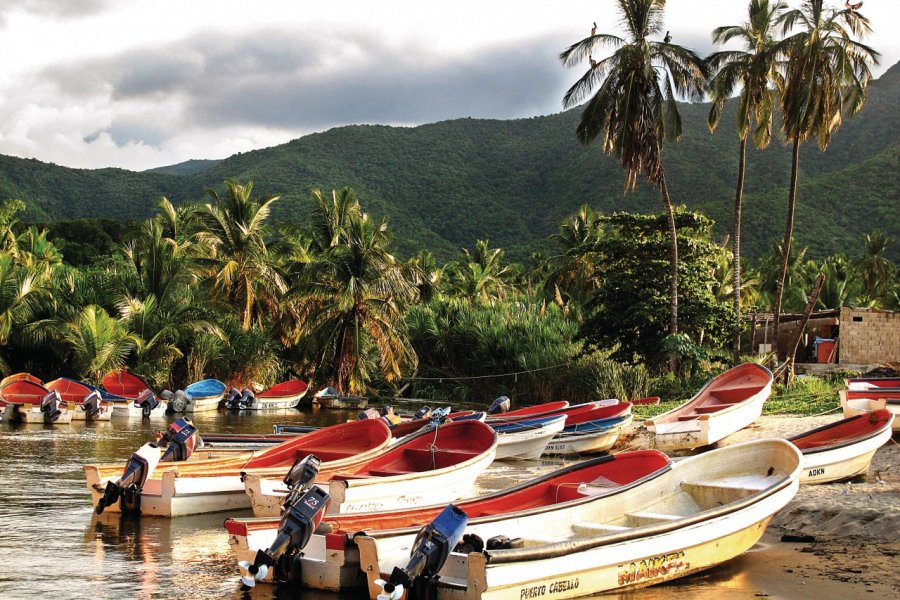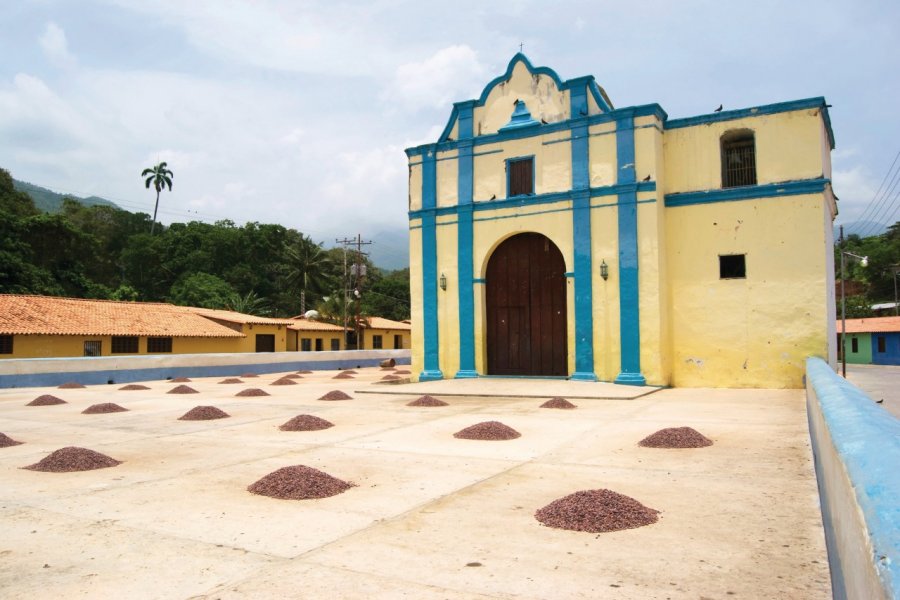Travel Guide Chuao
Find an accommodation
Advertising
Soon landed on the beach where the fishing nets up and where the children heckling, follow the path along the creek and turn right after the cottage, towards Chuao. You can go by bus, but the beauty of the journey is worth the trouble you get into this forest. On ochre land, the gigantic trees are looking at an invisible, noisy world. Cocoa seeds (green, yellow or red, depending on their stage of maturity) stain trunks darkened by a giant foliage that seems to touch the sky. The herbs in your passage; you are only facing triumphant nature. The former village founded in 1508, now known as Pueblo Quemado, was deserted by African slaves, after the Spanish set fire to them, because of the failure to pay taxes. On the right hand side, close to the bridge crossing the river, you will see a tree with strange protuberances. Legend says these are human faces, which appear when someone dies in the village. The spirits of these people would be locked up and would have escaped (certainly because of promiscuity promiscuity…), creating these mysterious forms. After 1 hour of walking, we finally arrive at the quiet village of Chuao, where time seems to have stopped. On Sunday, the village is more lively and everywhere résonne music. Women play bingo, among children. It is a population of Black people, descendants of Africans brought here to work on cocoa plantations. " The fortunes of Venezuela born in the cocoa culture, which began at the end of the th century, using as the labour force of the legions of black slaves, were invested in new plantations and commercial cultures, when we did not buy mines, urban land, slaves and herds. " Sergio Bagú. Since then, the village has not been mixed. And the absence of a road connecting it with the rest of the world is not doing so. Even Polar beers arrive here by boat. The only vehicles we see were taken by boat! A producer of the best cocoa in the world, this small black village has a semblance of museum which brings together some old tools, in very bad condition, intended for the preparation of cocoa. The visit of the church is possible if you find the señor who holds the key (but it is not Father Fouras). After the harvest, the precious beans are collected in the cooperative, Hacienda Chuao, managed by 71 associates. Then the cocoa is selected. The florastalero of the criollo (the best) is distinguished. Then it is dried and packaged in bags (fanegas) of about kilos. Shipped by boat, it will join other collections of the coast in Ocumare, more to the west, to be sold. A large library is also being installed in a recently renovated building, on the main square next to the church.
Suggested addresses Chuao
Weather at the moment
Advertising
Organize your trip with our partners Chuao
Transportation
Book your plane tickets
Car Rental
Boat rental
Accommodation & stays
Find a hotel
Holiday rental
Find your campsite
Tailor-made trip
Immersion travel
Services / On site
Activities & visits
Find a doctor





